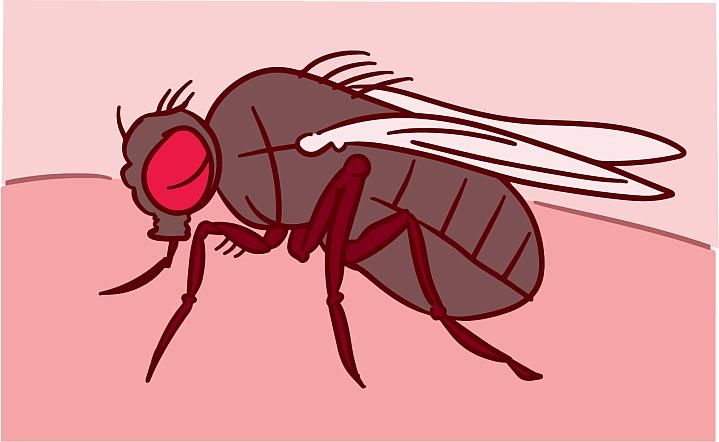The Mighty Fruit Fly
Pesky Insects Give Clues to Our Health

Fruit flies can be a major nuisance. How can you help but be annoyed when they hover in swarms over fruits, around picnics, and in garbage? But before you give them a swat, take a moment to be thankful for the common fruit fly. These pests have given scientists surprising insights into how the human body works.
Studying flies might seem unrelated to human health. After all, we don’t have wings, six legs, or antennae. And flies lack a backbone. But the underlying biological processes—like the activities of cells, molecules, and genes—are often similar.
“About 75% of human disease genes have counterparts in flies. So things we learn in flies will very often be relevant to humans,” says Dr. Kim McCall, who studies fruit flies at Boston University.
Over the years, experiments with flies have shed light on several types of cancer, diabetes, addiction, and many other aspects of human health. At least six Nobel Prizes have gone to scientists for their studies of flies.
One advantage of studying fruit flies is that they grow from egg to adult in only two weeks,* so it’s easy to study several generations. Dozens of fruit flies can live comfortably in small vials, eating only corn meal, sugar, and a little yeast. So they’re inexpensive to care for. Research labs can readily house many thousands of flies.
Another advantage of flies is that their genes are easy to examine and modify. Scientists can add or remove specific genes in flies to learn more about how the genes work and what they do. By studying flies, for example, one NIH-supported research team discovered more than 40 genes that cause rare genetic diseases in humans.
McCall and her colleagues analyze genes that affect cell death and the tiny trash-collecting machinery that clears away dead cells. “We have billions of cells in our body that die every day as part of normal turnover,” she says. “When they die, these cells also need to be removed. And if they’re not removed properly, that can trigger problems.”
McCall’s research found that when dead cells build up, nerve cells can break down and holes can develop in the fly brain. Her team is working to better understand this process. Their findings could give new insights into Alzheimer’s and related diseases in people.
“Human and fly brains both have different kinds of nerve cells. They also have similar types of support cells that carry out similar functions, including cell death,” McCall says. “There are a lot of similarities in how nerve cells communicate with each other.”
Some fruit fly researchers seem to have a sense of humor when it comes to naming genes. Many seem to enjoy puns. “Fly gene names can be very strange,” McCall says. See the Wise Choices box for some examples.
We humans owe a debt of gratitude to fruit flies and the discoveries they’ve enabled. But apparently our appreciation can only go so far.
“The number one question I get asked by the public is: How do you get rid of them?” McCall says. “The answer is apple cider vinegar and a few drops of dish soap.” But scientists appreciate having these pesky insects around.
*Editor's note: This statement contained an error and was updated following publication.
NIH Office of Communications and Public Liaison
Building 31, Room 5B52
Bethesda, MD 20892-2094
nihnewsinhealth@od.nih.gov
Tel: 301-451-8224
Editor: Harrison Wein, Ph.D.
Managing Editor: Tianna Hicklin, Ph.D.
Illustrator: Alan Defibaugh
Attention Editors: Reprint our articles and illustrations in your own publication. Our material is not copyrighted. Please acknowledge NIH News in Health as the source and send us a copy.
For more consumer health news and information, visit health.nih.gov.
For wellness toolkits, visit www.nih.gov/wellnesstoolkits.



